Just wanted to take a minute to say Merry Christmas and a Happy New Year to anyone who has taken the time to read my blog over the past few months! I hope you have a wonderful day.
Love,
Kathryn and Malteser


Coming to Korea was a huge, daunting move, and needless to say I did a lot of research beforehand; finding out about the culture and customs (bowing your head and removing your shoes inside), weather (yes, there definitely are 4 distinct seasons), and shopping (being told that buying clothes/shoes/underwear was pretty much impossible).
The information I found was helpful, but ultimately it’s living here which gives you the best knowledge. So here, in hindsight, is what advice I’d give myself, and anyone else about to move to Korea.
I had a quick look at some ‘learn to read Hangul’ guides before coming, but not in much detail, and I wish that I had. Once you’ve arrived, there’s so much else to sort out and distract you that you might not have the time to focus on learning to read in Korean- this happened to me, and in the end it was a while before I properly taught myself Hangul.
Don’t be put off by thinking it’s too difficult, because it’s much simpler than you’d imagine (everyone else I know agrees that it’s surprisingly easy to get a grip of). Being able to read it upon your arrival makes things much less daunting, even being able to read the city names and find your correct destination when you arrive at the airport.
I used the infamous Ryan Estrada method which can be found here, which I found pleasantly straightforward, and would definitely recommend.
I imagined that I’d be able to get a simple pay-as-you-go phone in Korea and that I wouldn’t use it too often, but that’s a pretty difficult thing to do. I was told by co-workers to set up a contract, as it would be hard to find somewhere to find a pay-as-you-go option.
Everyone I know has ended up setting a phone contract and getting a Korean phone as part of that contract- so if you’re coming out with your own phone, it could be that you’ll end up getting a new one instead.
I was pretty worried when I read that deodorant isn’t really used by Koreans, and came out with about 10 sprays in my luggage. Luckily for women, you can find deodorant now in most marts, even if it is the roll-on kind and more expensive than you’d expect.
But for men it’s more difficult. My male friends tell me it’s pretty much impossible to find stuff in a standard supermarket. So for them, they fill their cases with extra deodorant… or resort to buying the female version if they run out.
On the whole, the cost of living is so much cheaper in Korea, apart from where underwear is concerned. The price of underwear is pretty similar to the price of proper clothes, which I found pretty shocking. Plus, the selection isn’t the best to say the least… If I were packing to move out here, I’d cram my suitcase with extra items.
Oh, apart from socks, which are sold everywhere, are extremely cheap, and also amazing. In fact, I wouldn’t bother to pack any socks and buy them all when you arrive!
I didn’t have a clue what to expect from Korean cosmetics, so packed double the amount I needed: two makeup bags, extra face creams and wipes, just so many products. But luckily, there was no need as there are so many options in Korea, ranging from the very-cheap to the luxury, expensive items.
I’d guess there are even more options than you’d have back home. You only have to walk into a cosmetic shop to be faced with so many face creams, lotions, cleaners, toners, and goodness-knows what else, that you’ll be in the shop for hours, confused over what to buy.
Amazon ships some stuff to Korea, but not everything. And so the other option is G Market. There’s an English website which is convenient, and you can find most things you’d need on there.
Winter is hideously cold, but it’s alright as long as you have proper winter clothes. I came out with a winter coat, gloves, hat, scarves etc., but when the colder months arrived I realised that they weren’t enough, and that I needed proper winter clothes which are actually designed for the freezing temperatures.
They have everything you could ever need in Korea: thermal vests, leggings, hats, gloves, fluffy socks, pajamas, snoods, the list goes on. And while a lot of the winter coats are insanely expensive, there are cheaper options which are still perfect for facing the cold. My coat is my saviour during winter, it isn’t a huge puffer-jacket, and it cost a fraction of the price of the majority of coats.
Another thing I read online about Korea was the lack of certain foods, cereal being one of the main things which people claimed you couldn’t find. However I think that now, the majority of things can be found in marts. In fact, there is quite a large selection of cereals in all 3 of our local marts, even if it is slightly more expensive than you’d pay back home.
In the past few months I’ve even seen things like quinoa and oats (yay) appear on the shelves, which weren’t here 18 months ago. The only thing I find I miss are confectionery goods and bread (it does exist but the selection isn’t great, and the taste isn’t as good). And for things which you can’t find in the shops, I Herb is amazing.
One of the first shops you venture into should be Daiso. It is just the best, selling everything from tableware to shampoo to shower gel to headphones to slippers to towels to decorations for your home. It’s so cheap, but it isn’t rubbish either. Daiso is my go-to shop for most things other than food.
I’d read a lot about the lack of clothes/shoes to fit Westerners, but there are options out there, even if they’re limited/in Seoul. It’s true that a lot of the clothes are tiny, but there are larger shops which have a bigger selection, UniQlo being a good example. My boyfriend is much bigger than the average Korean male at over 6 foot, but he has found plenty of things to fit him here, as have I. And as for shoes, ABC Mart sells bigger sizes, and their biggest size was fine for my boyfriend.
If you’re finding it really hard to find clothes, there’s always Seoul which has a lot of Western shops, so you should be able to find something suitable, if you look hard enough!
I obviously had to mention the food in Korea, which I love. But it is something I worried about before coming to Korea, as hating the food would be pretty bad. And there are some strange meals which most Westerners would shy away from (raw seafood and animal innards spring to mind), but there is plenty of normal, delicious food. And it isn’t all spicy, as some people warn you. There’s a list of 20 Korean meals here, to give you an idea of what to expect.
If you really hate the food, there are Western restaurants even in smaller cities. And there’s guaranteed to be some of the Koreans’ favourite: fried-chicken. Although it might not be the healthiest choice to eat this too often.
I could start raving about food here, but that would be a whole new post…
I’m feeling very nostalgic (and hungry) today, so I thought I’d share this list: a collection of foods which are no longer available and which I miss dearly. (The original article which I wrote on Buzzfeed can be found here, but I thought I’d recreate it on my blog for all you foodies.)
1. Citrus Polos

These were so sharp they made your tongue hurt and turned your mouth a horrific yellow/green colour (especially if you ate a whole packet in one go like I did). But they were so good.
2. Mint Skittles
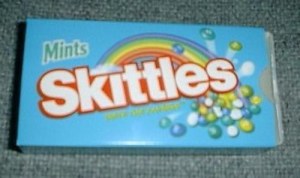
The best mints ever. I seem to remember that the blue colours were the best, and the green the worst. Way better than chewing-gum.
3. 3D Doritos
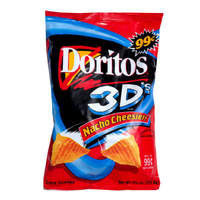
3D crisps just makes things more fun. And they were obviously delicious too- they’re Doritos after all.
4. Mini Hoola-Hoops
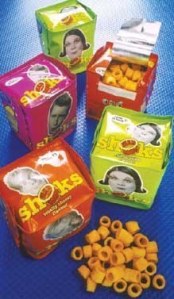
I don’t know why mini hoola-hoops were so much better than the regular kind, but they were, and they had so much more flavour. But you couldn’t stick them on your fingers like rings, as you can with the regular kind, which is a negative I suppose…
5. Shakey Jake Milkshake
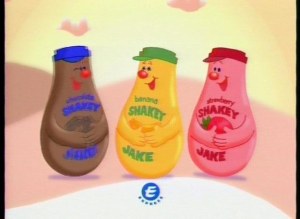
Shakey Jake milkshakes were delicious, and they came in cute bottles. Double the goodness.
6. Campino Sweets

Hard-boiled sweets aren’t usually that exciting, but Campinos were so good. I actually got given something very similar in Korea last week and was beyond excited.
7. Panda Pops
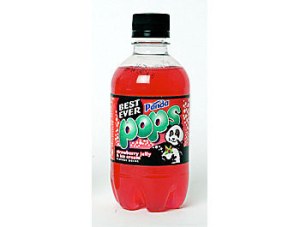
The classic kid’s fizzy drink- I used to buy these everyday from school for about 20 pence. Just amazing flavours, the ‘strawberry jelly’ I remember was particularly good… Probably full of artificial sugars and E numbers, but we didn’t care.
8. Cadbury’s Marble
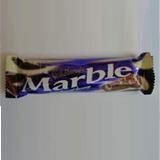
A mix of white chocolate, milk chocolate, and praline is clearly a match made in heaven- why did Cadbury’s ever stop making these bars?
9. Ben and Jerry’s Fossil Fuel

Fudge swirls, sweet-cream ice cream, cookie pieces and fudge dinosaurs to make it unique- I wish Ben and Jerry’s would bring back Fossil Fuel…please.
10. Ice Cream Flavour Chewits

The best flavour of Chewits out there, hands down.
11. Baked Bean Pizza

It might sound weird, but this pizza was so yummy. I would kill to be able to have one of these again.
12. Starburst Joosters

Similar to Jelly Beans, and so good. Please Starburst, bring back Joosters!
13. Cadbury Snaps
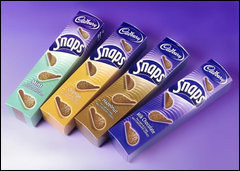
Pretty much chocolate in the shape of Pringles- addictive and delicious. The only downside was accidently eating a whole box in one go…
14. Fruit Allsorts
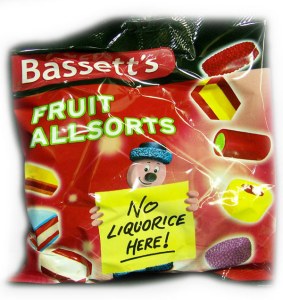
Allsorts without the liquorice- just amazing.
15. Flake Snow

Anything with white chocolate is always amazing, and this was no exception. It was like a regular Flake, only better.
16. Cadbury’s Dream Egg
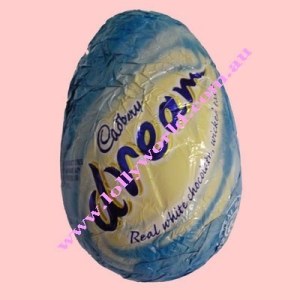
White chocolate egg filled with creamy white chocolate. The sweetest, sickliest, and best mini-Easter egg ever. And way better than ordinary Dream bars.
17. Bisc &…

Biscuit topped with your favourite chocolate bar? Yes please.
18. Cadbury’s Fuse Bar

A chocolate bar filled with nuts, fudge, raisins and cereal bits- it’s no surprise that there have been campaigns to bring these bars back to the shelves!
19. Flavoured Coke
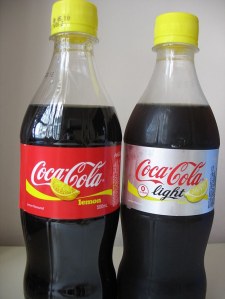
Coke and lime… coke and lemon… vanilla coke… Sometimes you can find one of these flavours but they’re so rare. So much better than plain old coke.
20. Lucky Charms

Ok, I know you can find Lucky Charms in some shops these days, but they’re always hugely overpriced- I don’t want to pay £6 for a box of cereal… Please bring them back properly, and for a normal price!
There are many more foods which I miss and wish would make a comeback, but these in particular would go down a treat! If you can think of any more forgotten gems, please leave a comment below…

It’s that time of year again- it’s snowy, it’s December and it’s time to feel Christmassy! I’m sure most expats would agree that Christmas isn’t a huge deal in Korea; sure, cafes are decorated prettily, there are Christmas-themed foods and drinks, and there are a few Christmas trees to make you feel festive. But compared to back home where Christmas spirit pretty much dominates the country as soon as Halloween is over and done with, Korea is somewhat lacking proper festivity.
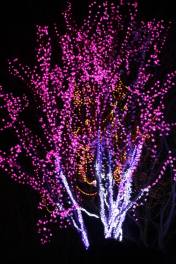 As a result, last year I spent a long time trying to find Christmassy things to do. And when I saw that there was a winter lighting festival at The Garden Of Morning Calm (in Gapyeong), it looked ideal. And luckily, my expectations were met and exceeded; the lighting display was spectacular to say the least, and unlike anything I’ve ever seen before.
As a result, last year I spent a long time trying to find Christmassy things to do. And when I saw that there was a winter lighting festival at The Garden Of Morning Calm (in Gapyeong), it looked ideal. And luckily, my expectations were met and exceeded; the lighting display was spectacular to say the least, and unlike anything I’ve ever seen before.
My photos from the festival don’t do justice to the stunning display; if it looks good in a photo, it looked 10 times better in real life. The view from the top of the garden is pretty breathtaking- a sea of twinkling lights in an array of bright, beautiful colours. As you wander around the gardens there are different sections with different themes. Heart sculptures for couples to pose in, a horse and carriage to sit in, animals, flowers, and light-tunnels. And it’s not only sculptures; the whole park is decorated with lights, covering the trees, plants, and paths. The whole garden looks enchanted.
I didn’t expect the festival to be so magical, but it’s one of the best things I’ve done in Korea and it’s well worth visiting, especially at this time of the year. It’s not a Christmas market with mulled wine and mince pies, but it’s a unique and brilliant alternative way to make you feel festive.
More information about the festival can be found here or on The Garden Of Morning Calm website. You should be prepared for it to be crowded, and full of people with selfie sticks, but it’s worth it. If you want to go walking in a winter wonderland, this is the place to visit.

I have always loved hairdressers in Korea- I can get a cut and style for about 15,000 won (approximately £8) which is just amazing, and about a quarter of the price I’d pay back in England. What’s even better is that the hairdresser always does a good job, even when I can only mime what I want done- a massive relief, especially the first time I went, having no idea what to expect and scared that miss-communication would lead to an awful cut.
Then I discovered ‘Magic Straight’, which brought my love of Korean hairdressing to new heights. I’ve always suffered from unruly curly hair which is prone to frizzing. So during our first humid Korean summer, I had a permanently electrocuted look about me, static frizz which I just couldn’t tame. Needless to say I hated it.
I’ve always been pretty wary about getting ‘extreme’ hair treatments, in case they forever ruin my hair. But when I heard about Magic Straight, I was immediately tempted- a way to permanently calm my hair, I could forget about the annoyance of humidity and I wouldn’t have to bother with the hair straighteners every day. And so this April, in preparation for the upcoming summer months, I booked an appointment to get Magic Straight.
Here are some thing you should know about the treatment:
I’d recommend Magic Straight simply for the fact it makes managing your hair so much easier. My hair is actually in better condition now because I don’t straighten it or blow-dry it nearly as much. And the best part? I don’t have to waste time in the morning with the straighteners. Best treatment ever.
In light of my recent post on exam stress, I thought it was quite fitting to share a video I saw on YouTube today. The video was made by a Korean middle-school student called Jason, and it shows his message to Korea: a depressing discussion of the Korean education system.
The video pretty much speaks for itself, but a few phrases particularly stand out for me. Firstly, when Jason sarcastically (but fairly accurately) describes a student’s academic life: “You will study for 10 hours a day until your college entrance exam. You will go to college and study more. But if you are not going to a good college, do not expect your parents to love you.”
Ok, perhaps the last sentence is exaggerated, but it isn’t entirely untrue. As is his comparison between Korean education and ‘child abuse’.
Jason continues to give an example of an 11-year-old student who has to attend 12 after-school programmes, and has so much work that she stays up until 3 am to finish it. Oh, and she has to get up at 7.15 for school the next morning. Healthy balance? I think not.
The most disturbing part for me is Jason’s closing remark, which compares the Korean education system to the Sewol Ferry Disaster: like the ferry, “it’s holding a lot of great people […] but all of a sudden it’s going to go down.” It’s a bold statement, but the mere fact that Jason compares education to such a horrific tragedy speaks for itself; if Jason, with his negative feelings, represent the average Korean student, then surely, something needs to change.
Education is important, success is important, but at what price? I predict that Jason’s video will have an impact on those who see it, but whether it will have any effect on a larger level is questionable. All I know is that it’s pretty horrible to watch such an obviously intelligent student with so much anger. And I hope for his sake, that things improve in the (very) near future.


There’s been a pretty negative atmosphere at school during the last week, and there’s one reason why: exam week. It’s the students’ final exams before the end of semester, a time when stress levels peak for pupils and teachers alike. Luckily for us foreign teachers, we are only in charge of one written exam. Apart from that, we’re not too involved in the tests, even the English one. But that doesn’t mean we’re completely removed from the drama when it’s exam season. During our time at the school we’ve seen students crying, parents crying, arguments, breakdowns and complaints.
I’ve written about education in Korea before: that while there is no arguing with the high academic achievements of Korean students, there is just far too much pressure placed upon students which leads to intense stress and misery. And the exam period just reinforces all my beliefs about the faults of the Korean education system.

First and foremost is obviously the absurd amount of pressure placed upon the students to perform well. My parents always used to say to me ‘as long as you do your best, that’s all you can do’- this is a sentiment which I think all students should be told. Sure, it’s foolish to not work your hardest when you have important tests, but if you try your absolute best and still only manage to gain a low/average mark, then you’ve done all you could do. And in my eyes, punishing a child who has worked to the best of their ability is belittling and harsh. Some people aren’t as academically gifted as others: this is a fact which should be understood and accepted.
But from what I’ve seen in 99% of students, this isn’t the case. Even if they try their hardest, if they study from 8 am to 12 am, if they don’t score well they will suffer the wrath, and even worse, shame, of their parents. And it seems that it is only a very high score which is acceptable; I’ve spoken to students who’ve been distraught about how ‘badly’ they’ve done, when in fact they’ve scored in the 80% bracket. In my eyes, that’s a pretty admirable result. It’s one thing to be pressured to do well, but it’s another when ‘to do well’ means getting a close to perfect score.
Another thing which I believe has detrimental consequences is the fact that students keep their exam papers afterwards, and are allowed to ask the teachers the correct answers. Why is this a problem? Because it doesn’t allow students to relax after an exam, to actually feel relieved that they’ve finished. Instead, it causes even more stress and worry as they endlessly debate with their friends whether the answer ‘to number 2 was A or B’, and then go to argue with a teacher about the correct answer. I’ve seen it happen so many times- the second the bell goes, the English office is invaded by hyped-up students demanding the correct answers and either cheering or crying when they hear it. They then go home and study the exam paper again, anxiously working out how they performed. When an exam is over, it should be over. Keeping the papers just prolongs and intensifies stress.

Something I find very strange, and contradictory to everything else exam-related is the attitude of students when they’re actually taking the exam. I have invigilated numerous tests- multiple choice tests, writing tests, less-important 1st/2nd grade tests, and extremely important 3rd grade tests which determine which high school students are accepted into. And one thing I have seen in every case? Students finishing the test in half (or less) of the allowed time and then going to sleep. This behaviour totally goes against all of the stress in the lead up to and aftermath of exams, and I don’t understand it.
When I had tests in school, I would never have dreamed of going to sleep- if you finished early, then you’d check your answers again and again, to make sure you hadn’t made any silly mistakes. In Korea, I invigilated one exam in which after only 5 minutes, 50% of students had finished and gone to sleep. The first time I saw this, I walked round waking up the students, not understanding what was happening and wondering why the teacher in charge wasn’t taking control, and ensuring they were trying their best and checking their answers. Now, I’ve learnt not to bother. But I find it utterly absurd behaviour, especially in a country where there is such importance placed on the exams. How would the parents react if they saw their child give up and go to sleep 10 minutes into an exam? The only way I can understand it is to assume that the students are so tired and stressed from revising, that the minute they consider themselves finished, they can’t bear to go back over the exam, and sleep instead. If this is true, it shows even more how the extremity of exam pressure actually has a negative impact on their performance.

Finally, I wonder whether the ‘multiple-choice’ style of exams is the best choice. When I first realised that all exams are in this format, I admit that I thought the students had it easy. I would have loved multiple choice, instead of long 3-hour essay-style exams. But now, I’ve read numerous English exams… and in each one, I couldn’t answer some of the questions. The choices are always so ambiguous that there are often a couple of acceptable answers. And what are the consequences? Official complaints from parents when their child doesn’t get a mark which perhaps they deserved. Again, this is something I’ve witnessed again and again. And if foreign teachers find it hard to answer an English multiple-choice question, what chance do the students have?
After the past week, after seeing what chaos the exam season causes in Korea, I just feel sympathy towards the students. I’ve seen one girl crying for 2 hours over 1 mark which she lost, I’ve seen a parent come into school and do the same. My co-teachers have received phone calls on their personal numbers until 11 pm from irate parents who want to discuss their child’s test. It’s too much. Exams are important, yes. Other countries envy Korea’s academic results, yes. But where do we draw a line between enough and too much? How many students will have to suffer depression, anxiety, or in extreme cases even commit suicide before things change?
There has to be balance and perspective. I hope that my students perform well after their tests this week. But I also hope that if they don’t get that top grade they wished for, they don’t spend their evenings berating themselves and in tears. And more importantly, I hope other people around them don’t criticise them either.

Last week I was reading about a new cafe which is opening in London- a ‘cereal cafe’, with hundreds of flavours of cereal, many of which have been discontinued or are foreign imports. Lucky Charms, Barbie Cereal, Star Wars Cereal- you name it, they’ve got it. They’ve even got cereal cakes, cereal memorabilia (yes, I would like a Kellogg’s Frosties lip-balm), and cereal artwork on the walls. As a cereal lover, it sounds like my dream cafe. Needless to say I was pretty jealous I wouldn’t be able to visit.
Then, I began to think about Korean cafes, and I began to feel a little better. Because if there’s one thing which Korea does well, it’s a cafe. First of all, they’re everywhere. You never need to worry about getting your coffee-fix, that’s for sure. And even better, there are just so many cool cafes. You can forget about boring old Starbucks or Caffe Bene, and go to one of the many exciting cafes instead. Here are just a few of the cafes in Korea that are worth a visit:
Dog Cafes
Never a more fun, or crazy, cafe will you find. Happy, excitable dogs ready and eager to play and entertain you whilst you drink your drink.
They’re chaotic, loud, and sometimes, you might have to watch dogs ‘do their business’ in the middle of the cafe. But, you will also be able to enjoy the company of many lovable dogs.
It might not be the most dignified cafe in the world, but it’s a happy one. (Just beware of dogs dribbling all over you…)
Cat Cafes
For a more peaceful animal cafe, cat cafes are the best option. A lot calmer, but you still get to play with loads of cute animals. Cats in these cafes might be slightly less sociable than dogs (we’ve been to a couple where the cats prefer to sleep than play), but they’re still happy for your attention.
Plus, your clothes aren’t as much at risk from paw prints and dribble, which is always a positive.
Sheep Cafe

If dogs and cats aren’t exciting enough for you, check out a sheep cafe instead. ‘Thanks Nature Cafe’ in Hongdae lets you enjoy your drinks in the company of sheep. The sheep might not be as playful as dogs or cats (and you definitely wouldn’t want them to try and sit on your lap), but it’s pretty cool to be able to pet sheep whilst drinking your coffee. Top marks for originality.
Hello Kitty Cafe
We always thought the Koreans were pretty obsessed with Hello Kitty, something which was proved when we saw that they have actual Hello Kitty Cafes. Girly-girls and Hello Kitty fans will be in heaven in these totally cute, totally pink cafes. And luckily, the drinks are quite good too!
Charlie Brown Cafe

The more masculine alternative to a Hello Kitty Cafe. Nice models of Charlie Brown and Snoopy decorate the cafes dedicated to the popular cartoon. If you’re a fan of Charlie, where better to reminisce and buy a cup of coffee in a special Charlie Brown mug, or to buy lots of Charlie merchandise?
Princess Diary Cafe

This isn’t a cafe named after the movie, it’s a dress-up cafe in Seoul, perfect for anyone who loves trying on outfits and posing. Go along and choose from a variety of outfits- fancy wedding dresses, traditional Korean clothes, mini-dresses, and more. Then, you can pose to your hearts content with many different props. It’s cheesy, girly, unique and fun. In fact, you’ll probably be so distracted by taking photos you’ll forget to drink your drink.
(Near Ewha Women’s University, 26 Ewhayeodae-gil, Seodaemun-gu, Seoul, South Korea)
Book Study Cafe

This is taking studying to a new extreme- having a cafe actually dedicated to it. Still, this cafe definitely has a better atmosphere than a library, and you can enjoy nice drinks at the same time! Let’s just hope people abide by the rules and stay quiet, or you won’t be able to get any work done…
(In Gangnam, Yeoksam-dong 816-6, Yongin Building)
Photography Cafe

Photography lovers will love this cafe in Incheon. You can either take along your own DSLR camera and choose a lens from the cafe to use, or you can rent both camera and lens. Then, enjoy playing with different lenses to your heart’s content (while enjoying your drink of course).
(Incheon-si, Yeonsu-gu, Songdo-dong 18-1)
There are so many more cafes around Korea- cute cafes, theme cafes, and many cafes which just sell delicious food and drinks. My favourite have to be the animal cafes, where I would happily go every day. But whether you simply want a cup of coffee, to eat some cake, or to try on wedding dresses, there is probably a cafe for you.
But if anyone would like to open a cereal cafe too, that would be totally amazing…

The past couple of weeks have seen the temperature drastically drop to below freezing- winter, along with a hefty lot of snow, has officially arrived. As such, the coats are back out, everyone is dressed up in their warming, winter gear. But there is one big difference between Koreans and foreigners and how they wear their winter clothes, and it’s something which puzzled me last year and has remained a mystery until now: why do (99% 0f) Koreans wear their coats inside?
It might seem like a trivial matter, but it really confuses me. It’s freezing in the corridors of most buildings, sure, but once you’re inside a warm room, why not remove your huge jacket? In our school, the corridors are usually colder than outside, but the classrooms (mine especially as I hate the cold with a passion) are nice and toasty warm. So why don’t my students take off their coat? I own a Korean winter coat, and I know how deliciously warm they are. In fact, I can get too warm when I’m outside and wearing mine. So how are the kids not sweltering? (And it’s by no means just the kids which follow this tradition- most adults also remain attached to their coat throughout the day too).
There’s a few reasons why I find it strange:
1) The obvious- they must be boiling hot.
2) They have nothing to put on when they go outside into the freezing cold- most people would at this point put on a coat to make them warmer, and so ready to face the cold outside, but if you’re already wearing one, you have no layers to add to make you warmer when you venture into lower temperatures.
3)Quite simply, coats are for wearing outside. Especially the heavy-duty coats which most Koreans wear in winter. They’re designed for freezing temperatures, not a heated classroom. It can’t be healthy…
Believe me, I’ve asked many of my students why they insist on wearing their coats- especially when they complain of being ‘too hot’ or turning off the heating. (Umm, maybe you’re hot because you’re wearing a quilted, fur-lined puffer jacket? On top of your thick winter blazer, no less.) I never get a proper answer. In fact, the most common answer is ‘My mum thinks I’ll lose it if I take it off’. Well, that’s not a great reason. Firstly, you’d have to be pretty forgetful (and blind) to leave a huge, bright red coat on your chair without noticing, and secondly, if you have that attitude, you’d never put anything down for fear of losing it. Imagine never being allowed to let go of your bag, or purse, or never taking off your gloves in case you forget to pick them up.
Apart from that, I never really hear a real reason why people wear their coats inside. It remains a mystery to me. So please, if you can enlighten me, if there is some myth or superstition about why you shouldn’t take your coat off inside, let me know. Or else I’ll remain clueless for another winter…